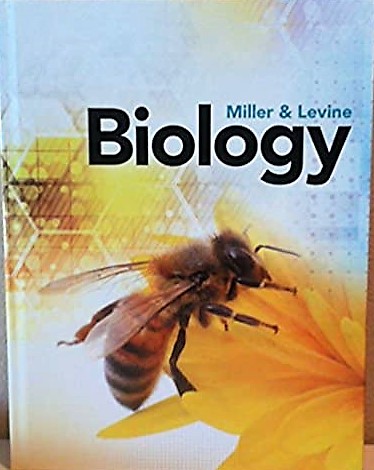
All Solutions
Page 756: Assessment
a. Animals: After the animals consume the fruits, the seeds are digested and eliminated from the body through their feces. On the other hand, some seeds are dispersed when they get tangled in the fur or feathers of animals.
Examples of plants that are dispersed by animals: Apples, cherries, and blackberries
b. Wind: Seeds that contain feathery bristles are often blown or carried by the wind. This enables the seeds to be transported into distant places.
Examples of plants that are dispersed by the wind: Dandelion and maples
c. Water: Oftentimes, seeds of plants that thrive near or within an aquatic environment rely on water for seed dispersal. Seeds that are light and waterproof stay afloat and are usually transported into different places through the help of the water.
Examples of plants that are dispersed by the water: Water lilies, mangrove, coconut, and other palm trees
b. Label A represents the style. It is the stalk that holds the stigma and connects it to the ovary of the flower.
c. The answer is F. The ovary is the female reproductive part of the flower that produces an ovule. Once it is fertilized, it develops into seeds.
d. The answer is sepal. Sepals are the modified leaves that are found at the outermost part of the flower. Their function is to protect a young, developing flower.
A – Style
B – Stigma
C – Anther
D – Filament
E – Stamen
F – Ovary
G – Sepal
H – Petal
b. Label A represents the style. It is the stalk that holds the stigma and connects it to the ovary of the flower.
c. The answer is F. The ovary is the female reproductive part of the flower that produces an ovule. Once it is fertilized, it develops into seeds.
d. The answer is sepal. Sepals are the modified leaves that are found at the outermost part of the flower. Their function is to protect a young, developing flower.
On the other hand, fern plants grow taller than mosses because they have an evolved transport system. The presence of vascular tissues and specialized cells that are strengthened by lignin allows them to move or transport water and nutrients throughout the parts of the plants.
In the beginning, mosses dominated the land but they were just confined to damp and moist areas. However, the climate during this period was warmer than the modern-day climate. The warmth and humidity affected the forest life. As a result, plants developed adaptations that would allow them to draw water from the soil. This event led to the appearance of plants that have vascular transport system. These plants are the ferns, horsetails, and club mosses.
Moreover, seeds contain plant embryos that are usually dormant. This function allows them to hinder germination when unfavorable conditions exist. As a result, this helps the seed survive the harsh environment and grow at a later time when the situation is more ideal; hence, they are preserved and they last longer.
On the other hand, an oak tree is a member of the plant kingdom. The characteristic that sets them apart from other organisms is that they are immobile. To compensate for not being able to move on their own, they are autotrophs. They are able to conduct photosynthesis to manufacture their own food.
Sexual Reproduction:
a. Advantages: There is an increased diversity among organisms due to fertilization of male and female gametophytes. In addition, the embryo develops inside the female plant, which protects them from the harsh conditions in the external environment.
b. Disadvantages: Plants that undergo sexual reproduction reproduce less frequently. In addition, mutations and poor traits can be passed on to the offspring.
Vegetative Reproduction:
a. Advantages: It does not require fertilization and the help of gametes, seeds, or flowers. In this case, plants that have desirable traits are easily reproduced and reproduction happens at a faster rate.
b. Disadvantages: Since the offspring are genetically identical to the parent, there is no diversity among the plants.
Furthermore, its wing-like structure creates an advantage for seed dispersal. It allows them to glide to a farther distance due to the wings that make the fruit spin and twirl when blown by the wind.
If they are exposed to the sun, the water in the soil would evaporate and the soil would become dry. This condition is not optimal for the survival and reproduction of mosses. On the other hand, if the area is shaded, the soil moisture would be retained; hence, there is an abundant growth of mosses.
1. When the pollen grain’s generative cell travels into the ovary, it divides mitotically to form two sperm nuclei.
2. In the ovule, one of the sperm nuclei combines with an egg cell to produce of a diploid zygote.
3. The other sperm nuclei fuse with two polar nuclei, the production of a triploid cell takes place.
4. The triploid cell becomes the endosperm tissue, which is the nutrient source for the growing embryo.
5. After fertilization, the ovule develops into seeds.
1. Determine the environment where the plant is found.
a. Green algae are mostly aquatic. They either live in the freshwater, saltwater, and other wet habitats.
b. Mosses and ferns live suitably in moist and damp places.
c. Gymnosperms and angiosperms live mostly in dry habitats.
2. Determine if the plant has true roots, leaves, and vascular tissues.
a. Green algae and mosses do not have true roots, leaves, and vascular tissues.
b. Ferns, gymnosperms, and angiosperms have true roots, leaves, and vascular tissues.
3. Determine whether the plant reproduces by spores or seeds.
a. Green algae, mosses, and ferns are spore-bearing plants.
b. Gymnosperms and angiosperms are seed-bearing plants.
4. Determine whether the plant bears the seeds in cones or flowers.
a. Gymnosperms bear their seeds in cones.
b. Angiosperms bear their seeds in cones.

